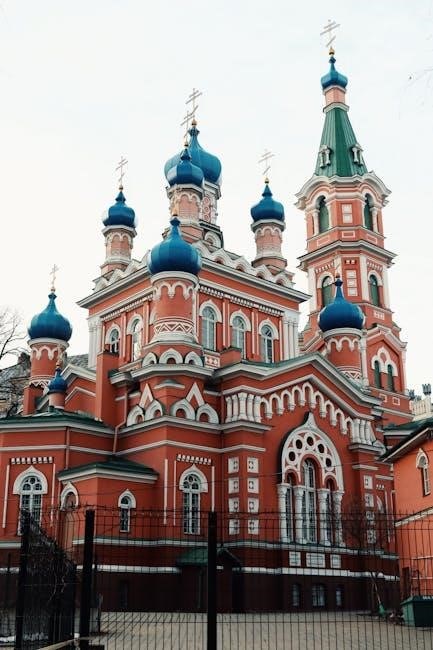Russia’s military helicopter fleet in 2024 reflects modernization efforts, strategic adaptations, and challenges. The HeliRussia 2024 exhibition showcased models like the Ka-52E and Mi-28NME, highlighting their combat capabilities. Sanctions and the rise of drones pose significant challenges, prompting innovative strategies to maintain operational effectiveness.
1.1 Overview of Russian Military Helicopter Fleet
Russia’s military helicopter fleet in 2024 comprises a mix of modernized and legacy aircraft, with approximately 130 combat and transport helicopters in active service; Key models include the Ka-52E scout/attack helicopter, Mi-28NME attack helicopter, and Mi-171Sh transport helicopter. The fleet also includes older models like the Mi-2 Hoplite, though their numbers are limited. These helicopters are integral to ground support, reconnaissance, and logistics. Despite modernization efforts, challenges such as sanctions and maintenance issues persist, impacting fleet readiness. The fleet’s composition reflects Russia’s focus on versatility and adaptability in modern warfare, balancing offensive and transport capabilities to support diverse military operations.
1.2 Significance of Helicopters in Modern Warfare
Helicopters play a pivotal role in modern warfare, offering versatility and adaptability across various combat scenarios. They enable rapid deployment, reconnaissance, and precision strikes, making them indispensable for ground support. Russian military helicopters, such as the Ka-52E and Mi-28NME, are designed for both attack and transport missions, enhancing operational flexibility. Their ability to operate in diverse terrains and weather conditions underscores their strategic importance. However, the rise of drones and advanced anti-aircraft systems poses challenges, necessitating continuous modernization. The effectiveness of helicopters in modern conflicts highlights their enduring value, despite evolving threats, ensuring they remain a cornerstone of military aviation strategies.
1.3 Recent Developments in Russian Military Aviation
Russia’s military aviation has seen significant advancements in 2024, with a focus on enhancing helicopter capabilities. The HeliRussia 2024 exhibition highlighted cutting-edge models like the Ka-52E and Mi-28NME, showcasing improved combat and transport functionalities. Rosoboronexport’s active role in promoting these helicopters underscores their strategic importance. Modernization efforts include integrating advanced technologies to counter evolving threats, such as drones and anti-aircraft systems. Despite sanctions impacting production, Russia continues to invest in research and development to maintain its competitive edge. These developments reflect Russia’s commitment to adapting its military aviation to meet modern warfare demands, ensuring operational effectiveness and global influence.
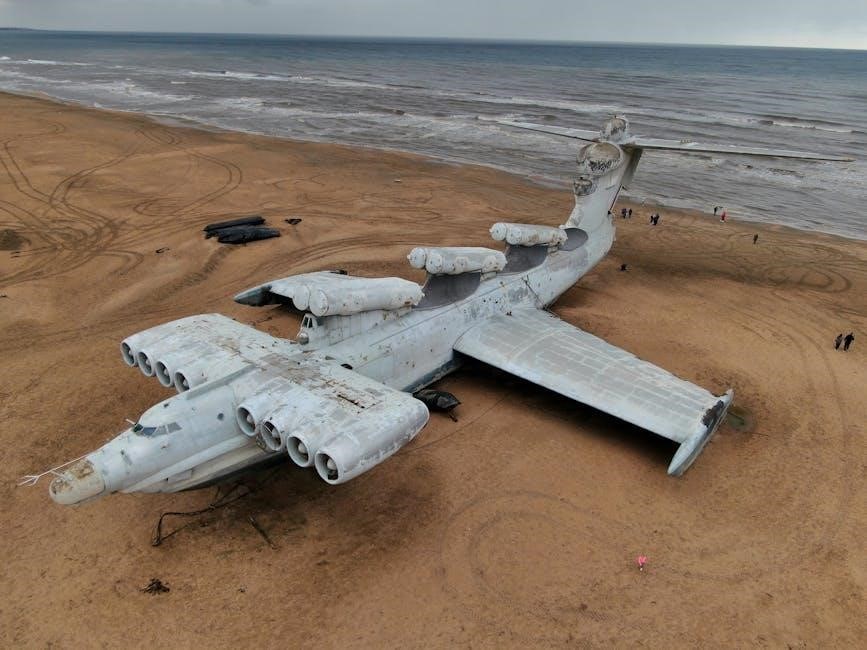
Current Models of Russian Military Helicopters
Russia’s 2024 military helicopter fleet includes the Ka-52E scout/attack, Mi-28NME attack, Mi-171Sh transport, and Mi-35M/P transport/attack models, all showcased at HeliRussia 2024, highlighting their advanced capabilities.
2.1 Ka-52E Scout/Attack Helicopter
The Ka-52E scout/attack helicopter is a highly advanced model in Russia’s 2024 fleet, featuring superior combat capabilities and versatility; Equipped with modern avionics and weapons systems, it excels in reconnaissance and precision strikes. Its design emphasizes maneuverability and survivability, making it a key asset in modern warfare. The Ka-52E’s ability to operate in various environments and its advanced targeting systems ensure its effectiveness on the battlefield. Showcased at HeliRussia 2024, this helicopter underscores Russia’s commitment to maintaining a cutting-edge military aviation program, addressing current and future operational demands with its robust performance and adaptability.
2.2 Mi-28NME Attack Helicopter
The Mi-28NME attack helicopter stands as a cornerstone of Russia’s 2024 military fleet, renowned for its formidable firepower and all-weather operational capabilities. Designed to dominate the battlefield, it features advanced anti-tank missiles, rockets, and a 30mm cannon, making it a versatile and lethal platform. The Mi-28NME’s night vision and targeting systems enhance its effectiveness in low-light conditions, while its armored design ensures resilience against enemy fire. Highlighted at HeliRussia 2024, this helicopter exemplifies Russia’s focus on enhancing combat readiness and addressing modern warfare challenges through continuous upgrades and technological advancements, ensuring its role as a critical asset in future conflicts.
2.3 Mi-171Sh Military Transport Helicopter
The Mi-171Sh is a versatile military transport helicopter integral to Russia’s 2024 fleet, excelling in troop transport, cargo delivery, and medical evacuation. Its robust design allows operations in diverse environments, from urban zones to remote areas. Equipped with advanced avionics and defensive systems, the Mi-171Sh ensures safety and efficiency. Showcased at HeliRussia 2024, it underscores Russia’s commitment to modernizing its transport capabilities. The helicopter’s reliability and payload capacity make it a critical asset for both combat and humanitarian missions, highlighting its enduring relevance in modern military operations and strategic logistics.
2.4 Mi-35M and Mi-35P Transport/Attack Helicopters
The Mi-35M and Mi-35P are dual-role transport/attack helicopters, featuring advanced weaponry and versatility. The Mi-35M excels in combat missions with its armament suite, while the Mi-35P focuses on transport capabilities. Both models are showcased at HeliRussia 2024, demonstrating Russia’s emphasis on multi-functional aircraft. Their adaptability in combat zones and logistical support roles makes them invaluable assets. Equipped with modern avionics, these helicopters enhance operational efficiency and combat readiness, ensuring they remain central to Russia’s military strategy in 2024 and beyond.
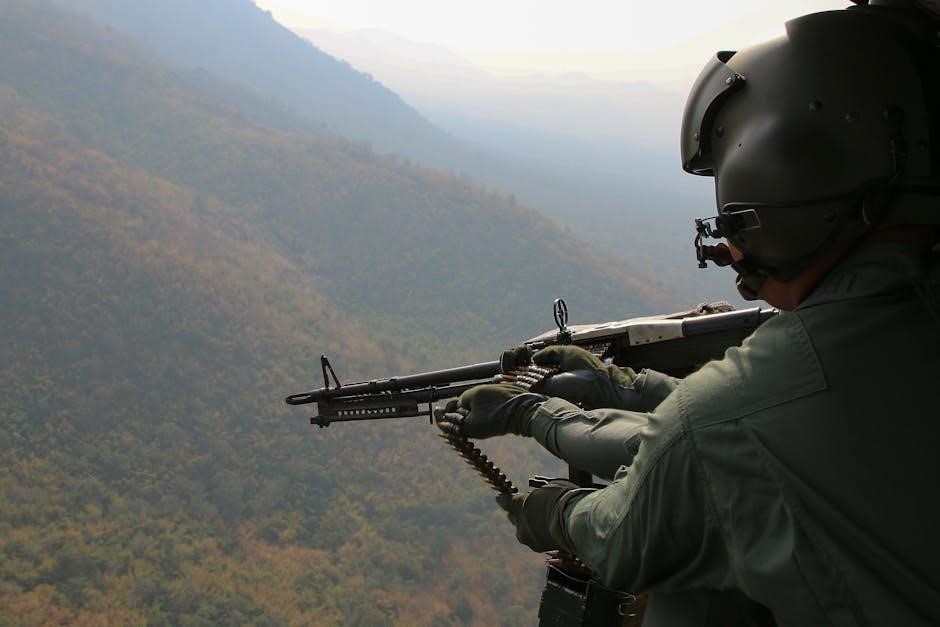
HeliRussia 2024 Exhibition
HeliRussia 2024, held from June 10 to 12 at Crocus Expo in Moscow, showcased Russia’s latest military helicopters, including the Ka-52E, Mi-28NME, and Mi-35M/P models, highlighting their combat and transport capabilities.
3.1 Date and Location of the Exhibition
HeliRussia 2024 took place from June 10 to 12, 2024, at the Crocus Expo International Exhibition Center in Moscow. This event served as a platform for showcasing Russia’s advanced military helicopters, including the Ka-52E, Mi-28NME, and Mi-35M/P models. Organized by Rosoboronexport, the exhibition highlighted the latest developments in Russian military aviation, emphasizing combat and transport capabilities. The event provided insights into the strategic role of helicopters in modern warfare and their adaptability to evolving challenges. It also underscored Russia’s commitment to maintaining its position in the global military helicopter market despite external pressures.
3.2 Helicopters Showcased at HeliRussia 2024
HeliRussia 2024 featured a range of advanced Russian military helicopters, including the Ka-52E scout/attack helicopter, known for its precision and combat versatility. The Mi-28NME attack helicopter was also showcased, demonstrating its enhanced night combat capabilities and advanced weaponry. Additionally, the Mi-171Sh military transport helicopter highlighted its robust logistical support and troop transport abilities. The Mi-35M and Mi-35P transport/attack helicopters were displayed, emphasizing their dual-role effectiveness in both combat and transportation missions. These models underscored Russia’s focus on modernizing its fleet to meet contemporary warfare demands and maintain global competitiveness in military aviation.
3.3 Importance of the Exhibition for Russian Military Aviation
HeliRussia 2024 served as a pivotal platform for showcasing Russia’s military aviation advancements, reinforcing its global standing. The exhibition highlighted the latest helicopter models, such as the Ka-52E and Mi-28NME, demonstrating their capabilities to potential international buyers. It also provided a forum for industry leaders to discuss innovations and strategies, fostering collaboration. By presenting its modernized fleet, Russia aimed to counteract sanctions and maintain its competitive edge in the global market. The event underscored the importance of military aviation in Russia’s defense strategy and its commitment to adapting to modern warfare challenges through technological advancements and strategic partnerships.
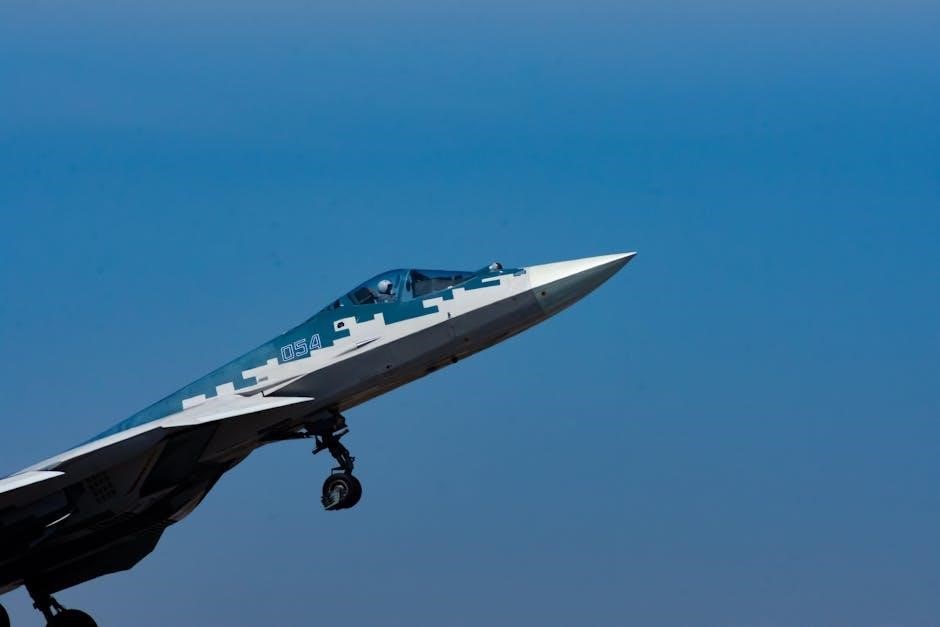
Role of Helicopters in the Russian-Ukrainian Conflict
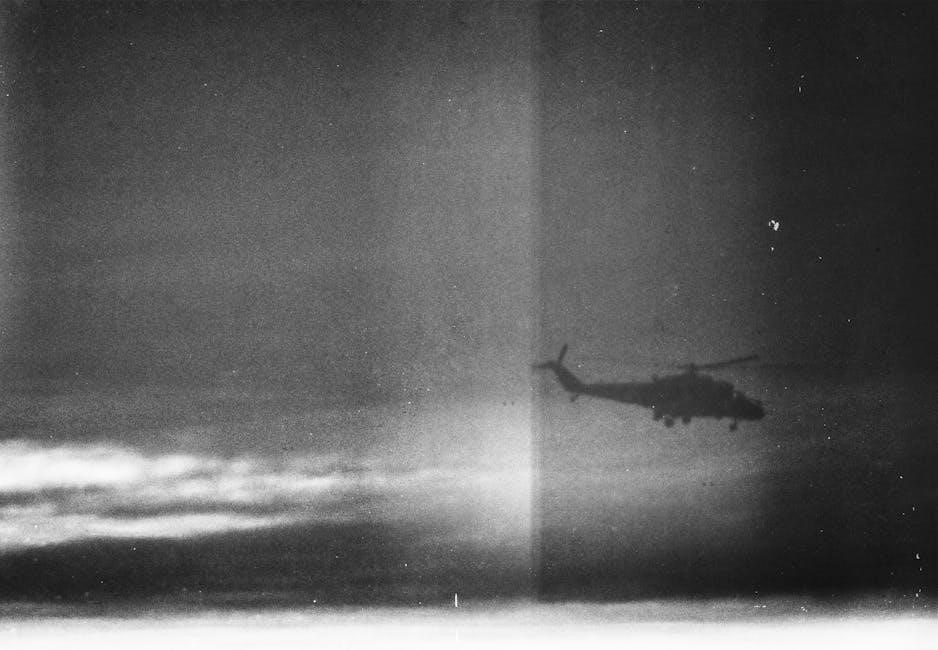
Russian helicopters played a significant role in the conflict, providing air support and transport. However, their effectiveness decreased due to advanced defenses, leading to a strategic shift towards drone integration and adaptive tactics to maintain operational relevance in modern warfare.
4.1 Combat Effectiveness of Russian Helicopters
Russian helicopters, such as the Ka-52E and Mi-28NME, have demonstrated significant combat capabilities in precision strikes and ground support. However, their effectiveness has been challenged by advanced Ukrainian air defenses, leading to losses. The conflict has highlighted vulnerabilities in traditional helicopter tactics, prompting a shift toward integrating drones and developing new strategies to counter modern threats. Despite these challenges, Russian helicopters remain critical for mobility and firepower, adapting to evolving battlefield conditions while addressing limitations in contested airspace.
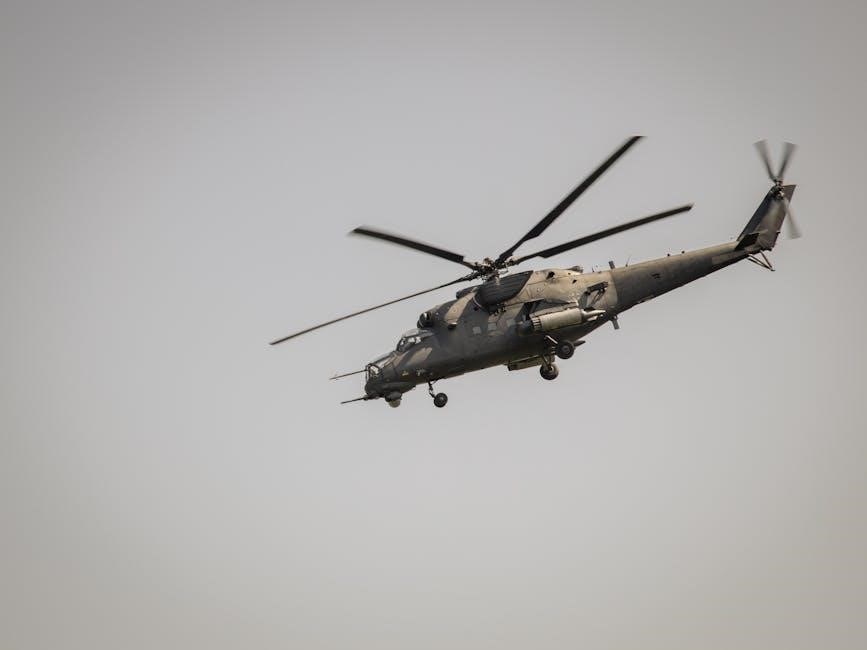
4.2 Challenges Faced by Russian Helicopters
Russian military helicopters face significant challenges, including advanced air defense systems and the increasing role of drones. Sanctions have impacted maintenance and production, reducing readiness. The conflict in Ukraine has exposed vulnerabilities in traditional tactics, leading to losses. Additionally, the rising cost of modernization and limited access to critical components hinder long-term sustainability. These challenges necessitate strategic adaptations and technological advancements to maintain operational effectiveness in future conflicts.
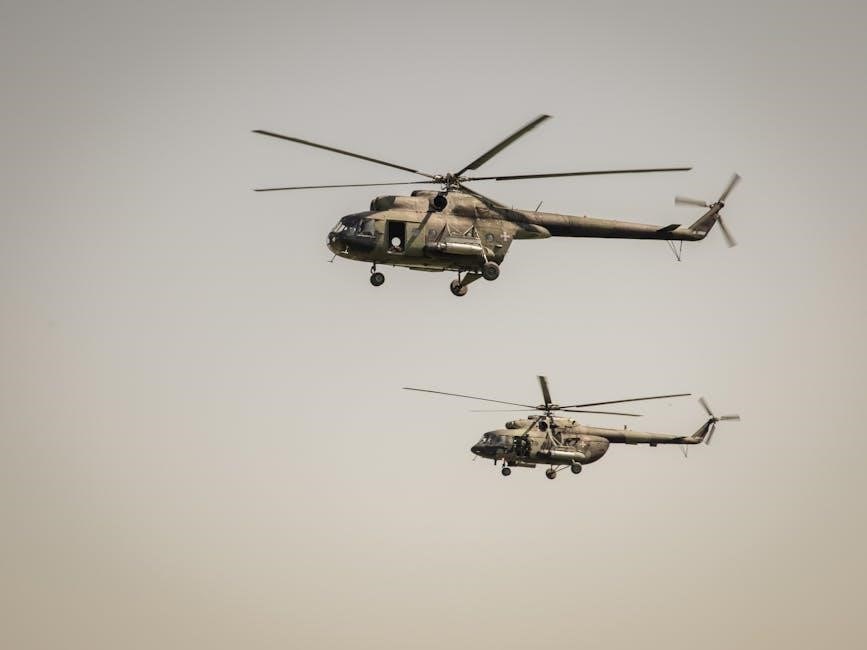
4;3 Growing Role of Drones in Modern Warfare
The increasing deployment of drones in modern warfare has significantly impacted traditional helicopter operations. Drones offer cost-effectiveness, reduced risk to personnel, and precision in reconnaissance and strike missions. Russia has faced challenges from Ukrainian drones, such as the Turkish-made Bayraktar TB2, which have targeted Russian positions and equipment. Additionally, drones like the Lancet and Shahed series have demonstrated their effectiveness in the conflict. This shift underscores the need for Russian helicopters to adapt, integrating counter-drone technologies and evolving tactics to remain relevant in future conflicts. The rise of drones is reshaping the dynamics of modern warfare, challenging conventional assets like helicopters.
Military Strategies and Adaptations
Russia’s military strategies in 2024 emphasize adapting helicopter operations to modern warfare challenges, including counter-drone measures and integrating advanced technologies to enhance combat effectiveness and survivability.
5.1 Strategic Importance of Helicopters in Russian Military Doctrine
Russian military doctrine places significant emphasis on helicopters as versatile and essential assets. They are integral to ground support, reconnaissance, and special operations, ensuring rapid deployment and maneuverability. Helicopters enable the Russian military to project power across diverse terrains, from urban environments to remote areas. Their ability to operate in contested airspace and deliver precision strikes makes them critical in modern conflict scenarios. Additionally, helicopters play a key role in logistics and medical evacuation, sustaining operational continuity. This strategic importance underscores their central role in achieving tactical objectives and maintaining battlefield superiority, reflecting Russia’s commitment to leveraging advanced rotorcraft capabilities for future conflicts.
5.2 Adaptation to Modern Warfare Challenges
Russian military helicopters are adapting to modern warfare challenges by integrating advanced technologies. The Ka-52E and Mi-28NME now feature improved avionics, night vision systems, and precision-guided munitions, enhancing their combat effectiveness. These upgrades enable helicopters to operate effectively in contested environments and counter evolving threats. Additionally, the use of drones and autonomous systems is being explored to complement helicopter operations, reducing risks and increasing operational flexibility. These adaptations reflect Russia’s efforts to maintain its rotorcraft capabilities in line with global advancements, ensuring they remain relevant and effective in future conflicts. Such modernization is crucial for sustaining operational superiority in dynamic warfare scenarios.
5.3 Development of New Strategies and Technologies
Russia is actively developing new strategies and technologies to enhance its military helicopter capabilities. Advances in artificial intelligence and hypersonic technology are being explored to improve speed and precision. Stealth technologies are also being integrated to reduce detection risks. Additionally, the development of next-generation rotorcraft, such as high-speed helicopters, aims to revolutionize mobility and combat effectiveness. These innovations are complemented by the integration of drones, creating a more versatile and adaptive force. Such advancements underscore Russia’s commitment to maintaining a competitive edge in military aviation, addressing modern threats, and ensuring operational superiority in future conflicts. These efforts are critical to sustaining strategic advantages.
Export and Global Presence
Russia’s military helicopters, such as the Ka-52E and Mi-28NME, are in high demand globally, with Rosoboronexport leading exports. Their reliability and combat prowess attract international buyers, solidifying Russia’s presence in the global defense market and fostering military alliances through exports. This strategic approach ensures economic benefits and strengthens geopolitical ties, making Russian helicopters a preferred choice for many nations seeking advanced aviation capabilities. The export success underscores Russia’s influence in the international arms trade, maintaining its position as a key supplier of military helicopters worldwide. This global presence is vital for Russia’s economic and military strategies.
6.1 Russian Military Helicopters on the Global Market
Russian military helicopters are highly sought after on the global market due to their durability, versatility, and combat effectiveness. Models like the Ka-52E, Mi-28NME, and Mi-171Sh are exported to various countries, showcasing Russia’s strong presence in international defense trade. Rosoboronexport plays a pivotal role in facilitating these exports, ensuring Russian helicopters meet global demand. Their popularity stems from proven performance in diverse combat environments, making them a reliable choice for nations seeking advanced aviation capabilities. This success underscores Russia’s influence in the global arms market, reinforcing its position as a leading exporter of military helicopters. The demand continues to grow, driven by their reputation for reliability and effectiveness in modern warfare.
6.2 Key Export Models and Their Popularity
The Ka-52E, Mi-28NME, Mi-171Sh, and Mi-35M/P are among Russia’s most popular export helicopters. The Ka-52E excels as a scout/attack helicopter, while the Mi-28NME is renowned for its combat prowess. The Mi-171Sh stands out as a versatile transport helicopter, and the Mi-35M/P combines transport and attack capabilities. These models are favored globally for their durability, adaptability, and effectiveness in various combat scenarios. Their popularity is further boosted by competitive pricing and robust after-sales support, making them a preferred choice for many nations seeking reliable military aviation solutions. This demand highlights Russia’s ability to meet diverse defense needs worldwide.
6.3 Rosoboronexport’s Role in Helicopter Exports
Rosoboronexport, a subsidiary of Rostec, plays a pivotal role in promoting Russian military helicopters globally. As the primary state intermediary, it facilitates exports, ensuring compliance with international regulations. At HeliRussia 2024, Rosoboronexport showcased models like the Ka-52E and Mi-28NME, attracting foreign delegations. The company’s strategic marketing, competitive pricing, and tailored solutions enhance Russia’s market presence. By fostering partnerships and securing contracts, Rosoboronexport strengthens Russia’s position in the global defense market, contributing significantly to the nation’s military-industrial complex. Its efforts ensure Russian helicopters remain a preferred choice for many countries seeking advanced and reliable aviation solutions. This underscores Rosoboronexport’s importance in sustaining Russia’s export momentum.
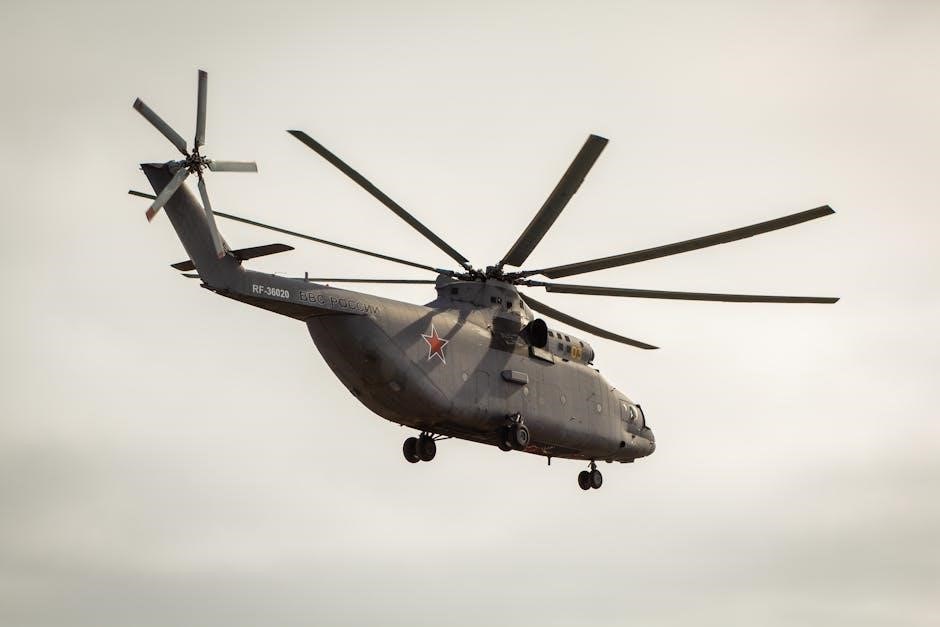
Future Developments and Modernization
Russia focuses on integrating advanced technologies, including AI and next-gen rotor systems, to enhance helicopter performance. Rosoboronexport leads efforts to promote these innovations globally, ensuring competitiveness.
7.1 Upcoming Modernization Programs for Russian Helicopters
Russia’s upcoming modernization programs aim to enhance helicopter capabilities through advanced avionics and weapon systems. The Ka-52E and Mi-28NME are prioritized for upgrades, including improved targeting systems and stealth features. These modifications are designed to increase combat effectiveness and adapt to evolving warfare demands. Additionally, efforts focus on reducing maintenance costs and extending service life. The integration of new technologies ensures Russian helicopters remain competitive on the global market, aligning with strategic goals to maintain military superiority and export success.
7.2 Integration of New Technologies
Russia is actively integrating new technologies into its military helicopters to enhance performance and combat readiness. Advanced avionics, AI-driven systems, and improved navigation are being implemented to boost accuracy and operational efficiency. The focus is on countering modern threats and adapting to evolving warfare scenarios. These technological advancements aim to mitigate the impact of sanctions and maintain Russia’s competitive edge in global military aviation. The integration of cutting-edge systems ensures Russian helicopters remain effective in various combat environments, aligning with strategic goals to modernize and strengthen military capabilities. This technological overhaul is crucial for sustaining Russia’s influence in the global defense market.
7.3 Investment in Research and Development
Russia has significantly increased its investment in research and development (R&D) for military helicopters in 2024. This focus aims to enhance technological capabilities and maintain global competitiveness. R&D efforts are directed toward improving helicopter design, propulsion systems, and weapon integration. Advanced materials and stealth technologies are being explored to reduce detection risks. Additionally, investments in AI and autonomous systems are expected to revolutionize helicopter operations. These initiatives underscore Russia’s commitment to modernizing its military aviation sector despite economic challenges. By prioritizing R&D, Russia seeks to ensure its helicopters remain cutting-edge and capable of meeting future warfare demands effectively. This strategic approach is vital for long-term military readiness.
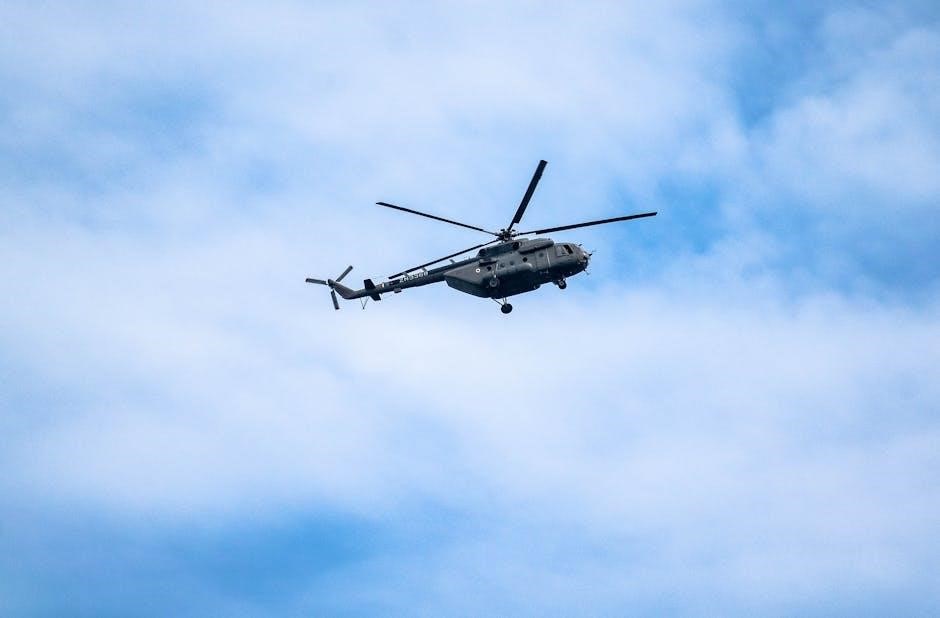
Impact of Sanctions on Russian Military Helicopter Production
Sanctions have significantly impacted Russian military helicopter production, causing supply chain disruptions and component shortages. Strategies to mitigate these challenges include diversifying suppliers and enhancing domestic manufacturing capabilities.
8.1 Effects of International Sanctions
International sanctions have significantly impacted Russian military helicopter production, disrupting supply chains and limiting access to critical components. Key materials, such as advanced electronics and engine parts, are now scarce due to restrictions. This has led to delays in manufacturing and modernization programs, affecting both current and future production capabilities. Sanctions have also hindered collaboration with foreign partners, further isolating Russia’s defense industry. Despite these challenges, Russia is attempting to adapt by diversifying suppliers and increasing domestic production. However, the long-term sustainability of these efforts remains uncertain, posing a significant threat to the viability of Russia’s military helicopter fleet.
8.2 Challenges in Maintaining Production Levels
Russia faces significant challenges in maintaining production levels for military helicopters due to resource shortages and logistical disruptions. Sanctions have exacerbated these issues, limiting access to essential components and advanced technologies. Domestic manufacturing capabilities are strained, leading to delays in delivering new aircraft and modernizing existing fleets. Additionally, the depletion of spare parts reserves has further complicated maintenance efforts. These challenges are compounded by the need to sustain ongoing military operations, placing additional pressure on an already overburdened production system. As a result, Russia’s ability to meet both domestic and export demands for military helicopters is increasingly at risk.
8.3 Strategies to Mitigate Sanction Impacts
Russia has implemented several strategies to mitigate the effects of sanctions on its military helicopter production. These include increasing domestic manufacturing capabilities, accelerating import substitution programs, and diversifying supply chains with partners from non-sanctioning countries. Additionally, Rosoboronexport has focused on promoting self-reliance in critical technologies, such as advanced avionics and propulsion systems. Efforts to modernize production facilities and enhance research and development capabilities are also underway. By prioritizing these measures, Russia aims to reduce its dependence on restricted components and sustain its military helicopter production and modernization efforts despite external pressures.
Russia’s military helicopters in 2024 demonstrate resilience amid sanctions and evolving warfare. Modernization, strategic adaptations, and exhibition showcases highlight their enduring role, despite challenges from drones and sanctions.
9.1 Summary of Key Points
Russia’s military helicopters in 2024 remain a cornerstone of its defense strategy, with models like the Ka-52E and Mi-28NME showcasing advanced capabilities. The HeliRussia 2024 exhibition highlighted these aircraft, emphasizing their role in modern warfare. However, challenges such as sanctions and the rise of drones have prompted strategic adaptations. Despite these hurdles, Russian helicopters continue to demonstrate their effectiveness in combat and transport roles. The integration of new technologies and modernization programs underscores Russia’s commitment to maintaining its aviation prowess. These developments reflect the evolving nature of military aviation and its critical role in addressing contemporary security challenges.
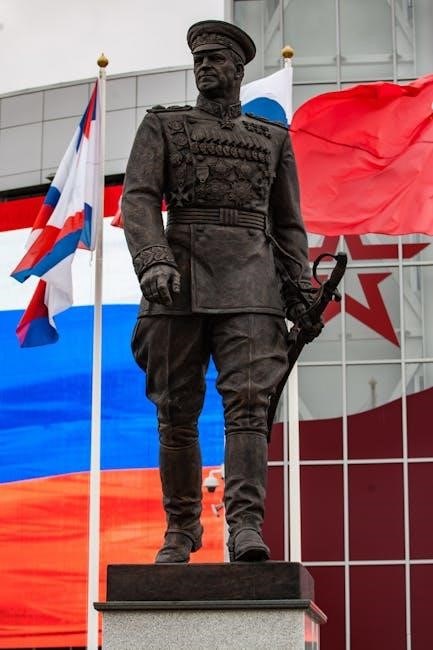
9.2 Future Outlook for Russian Military Helicopters
Russia’s military helicopters are expected to undergo significant modernization, with a focus on integrating advanced technologies and improving combat effectiveness. Despite sanctions, investments in research and development aim to enhance capabilities and maintain global competitiveness. The adaptation of helicopters for diverse roles, from attack to transport, will remain a priority. Additionally, Rosoboronexport’s efforts to promote exports highlight the importance of these aircraft on the international market. While challenges persist, Russia’s commitment to innovation and strategic adaptations ensures its military helicopters will continue to play a vital role in future conflicts and global defense strategies.
9.3 Final Thoughts on the Evolution of Russian Military Aviation
The evolution of Russian military aviation, particularly in helicopters, underscores a blend of resilience and innovation. Despite challenges like sanctions and shifting warfare dynamics, Russia has demonstrated adaptability by modernizing its fleet and integrating new technologies. The rise of drones and autonomous systems signals a transformative era, prompting strategic overhauls in military doctrine. While traditional helicopters remain crucial, their roles are being redefined to complement emerging technologies. This dual approach of maintaining legacy systems while embracing innovation positions Russian military aviation to remain competitive, ensuring its continued relevance on the global stage and in future conflicts.
References and Further Reading
Key sources include academic journals like Hadtudományi Szemle, official documents such as Strategia_Nationala_de_Aparare_a_Tarii_2020_2024.pdf, and industry publications like Russias Warplanes by Harpia Publishing.
10.1 Academic Sources and Research Papers
Academic sources provide in-depth analysis of Russian military helicopters in 2024. Hadtudományi Szemle (Volume 17, Issue 2, 2024) features a study by Norbert Szári titled Combat Helicopters and Drones in the Russian-Ukrainian Conflict: Challenges and Transformations, offering insights into their evolving role. Other research papers explore the effectiveness of models like the Ka-52E and Mi-28NME, while discussing modernization challenges and strategic adaptations. These academic works are essential for understanding the operational and technological advancements in Russia’s military aviation, providing a scholarly perspective on their capabilities and limitations in contemporary conflicts.
10.2 Official Documents and Reports
Official documents and reports provide authoritative insights into Russia’s military helicopter developments in 2024. Rosoboronexport’s materials highlight the showcase of advanced models like the Ka-52E and Mi-28NME at HeliRussia 2024. Government reports detail production levels, modernization efforts, and strategic adaptations in response to sanctions. These documents also outline the role of Russian military helicopters in global conflicts, offering a glimpse into operational capabilities and challenges. Official sources are crucial for understanding the alignment of helicopter production with national security objectives and the integration of new technologies to maintain competitiveness in modern warfare. They serve as primary references for analyzing Russia’s military aviation strategy and industrial capabilities.
10.3 Industry Publications and News Articles
Industry publications and news articles offer detailed coverage of Russia’s military helicopters in 2024. Reports from defense journals highlight the showcase of models like the Ka-52E and Mi-28NME at HeliRussia 2024, emphasizing their advanced features. Articles discuss the impact of sanctions on production, adaptation strategies, and the growing role of drones. Industry sources also provide insights into export trends, with Rosoboronexport’s role in promoting Russian helicopters globally. These publications are essential for understanding the technical and strategic evolution of Russia’s military aviation, offering analysis on combat effectiveness, modernization efforts, and the challenges faced by the industry in maintaining its competitive edge in the global market.

